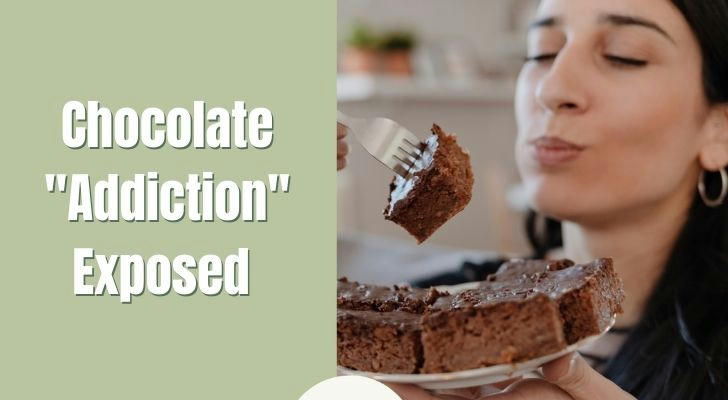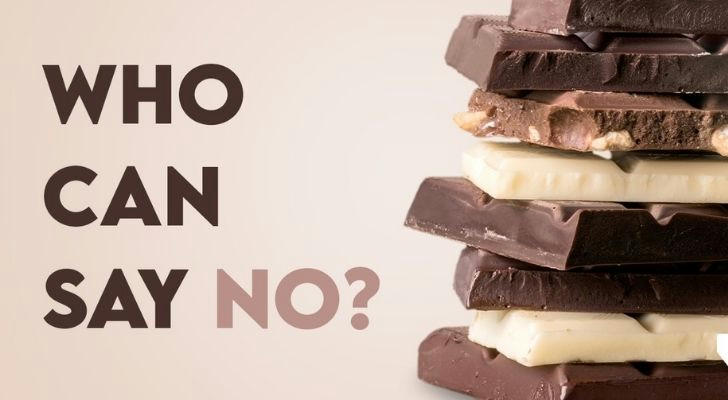Chocolate 'Addiction' Exposed: How Phenethylamine and Dopamine Trick the Brain
Imagine unwrapping a chocolate bar, taking a bite, and feeling an almost instantaneous wave of euphoria wash over you. Your mood lifts, stress melts away, and for a fleeting moment, the world feels perfect. But what’s really happening inside your brain? Is chocolate truly addictive, or is there something more insidious at play? The answer lies in two tiny molecules—phenethylamine (PEA) and dopamine—that hijack your brain’s reward system, turning a simple treat into a craving that feels impossible to resist.

The Phenethylamine Effect: Nature’s "Love Drug"
Phenethylamine, often dubbed the "love molecule," is a natural compound found in chocolate. It’s chemically similar to amphetamines, though far milder. When you eat chocolate, PEA floods your brain, triggering the release of endorphins—the body’s homemade opioids that dull pain and boost pleasure. This surge creates sensations akin to falling in love: warmth, excitement, and a loss of inhibition. In fact, some studies suggest PEA may even temporarily elevate heart rate and blood pressure, mimicking the early stages of infatuation.
But here’s the twist: Your brain breaks down PEA rapidly, thanks to an enzyme called monoamine oxidase (MAO). This means the blissful effects are short-lived, lasting only minutes. To keep the high going, many people reach for another piece. Enter dopamine, the mastermind behind cravings.
Dopamine: The Reward System’s Saboteur
Dopamine is the neurotransmitter responsible for signaling pleasure and reinforcing behaviors. When you eat chocolate, dopamine floods the nucleus accumbens, the brain’s "reward center," creating a surge of satisfaction. Over time, repeated exposure trains your brain to associate chocolate with this reward. The more you indulge, the more dopamine receptors become desensitized, demanding larger or more frequent doses to achieve the same level of gratification.
This cycle mirrors addiction patterns seen in substances like cocaine or nicotine. However, unlike hard drugs, chocolate doesn’t cause physical dependence. Instead, it exploits psychological cravings. The anticipation of that dopamine hit—coupled with sensory cues like smell or texture—can trigger compulsive eating behaviors.

Sugar and Fat: The Perfect Storm
Chocolate’s addictive allure isn’t solely due to PEA and dopamine. Modern chocolate products are engineered for maximum indulgence. High sugar content spikes blood glucose levels, providing a quick energy boost followed by a crash that leaves you craving more. Fat, too, plays a role; it slows digestion, prolonging the release of PEA and dopamine. Together, these ingredients create a sensory tsunami that overrides rational decision-making.
Food scientists have weaponized this knowledge. Take milk chocolate, which blends sugar, cocoa butter, and milk solids into a creamy, melt-in-your-mouth texture designed to trigger overconsumption. Dark chocolate, while richer in antioxidants and lower in sugar, still contains enough PEA and fat to stimulate cravings—though its effects are slightly less potent.
Why You Can’t Just Eat One Piece
Human evolution complicates matters further. Our ancestors evolved to seek out calorie-dense foods as survival tools. Chocolate’s high sugar and fat content taps into this primal instinct, overriding modern dietary boundaries. Meanwhile, stress and emotional eating amplify dopamine’s grip. Studies show that people under pressure produce less serotonin, a neurotransmitter linked to mood regulation. Chocolate temporarily compensates by boosting serotonin indirectly through PEA and dopamine pathways.
Even sleep deprivation weakens defenses. Lack of sleep disrupts hunger hormones like ghrelin and leptin, increasing cravings for sugary, fatty foods—including chocolate. In this way, everyday stressors and biological quirks conspire to keep you coming back for more.

Breaking Free: Outsmarting the Brain’s Tricks
Understanding the science behind chocolate’s allure is the first step to mastering it. Here’s how to enjoy chocolate without becoming its prisoner:
Mindful Eating: Savor each bite slowly. Slowing consumption extends PEA’s fleeting high and reduces total intake.
Balance Blood Sugar: Pair chocolate with protein or fiber-rich snacks to stabilize glucose levels and curb cravings.
Opt for Dark Chocolate: Choose bars with 70% cocoa or higher. Less sugar and more antioxidants make overindulgence less tempting.
Identify Triggers: Track cravings to pinpoint emotional or environmental cues (e.g., stress, boredom) driving your desire.
Hydrate: Thirst often masquerades as hunger. Drink water before reaching for chocolate to test your true hunger level.
The Bottom Line: Craving, Not Addiction
Chocolate doesn’t hijack your brain in the same way as drugs or alcohol. There’s no clinical diagnosis of "chocolate addiction," and withdrawal symptoms are virtually nonexistent. What we experience is intense craving fueled by chemistry, psychology, and cultural conditioning. PEA and dopamine deliver momentary joy, but they’re not villains—they’re ancient survival mechanisms gone haywire in a world of hyper-processed treats.
In moderation, chocolate remains a delightful indulgence. The next time you tear open a wrapper, remember: Your brain isn’t betraying you. It’s simply following millennia-old programming. Outsmart it with awareness, and you’ll never feel deprived—just delightfully in control.
